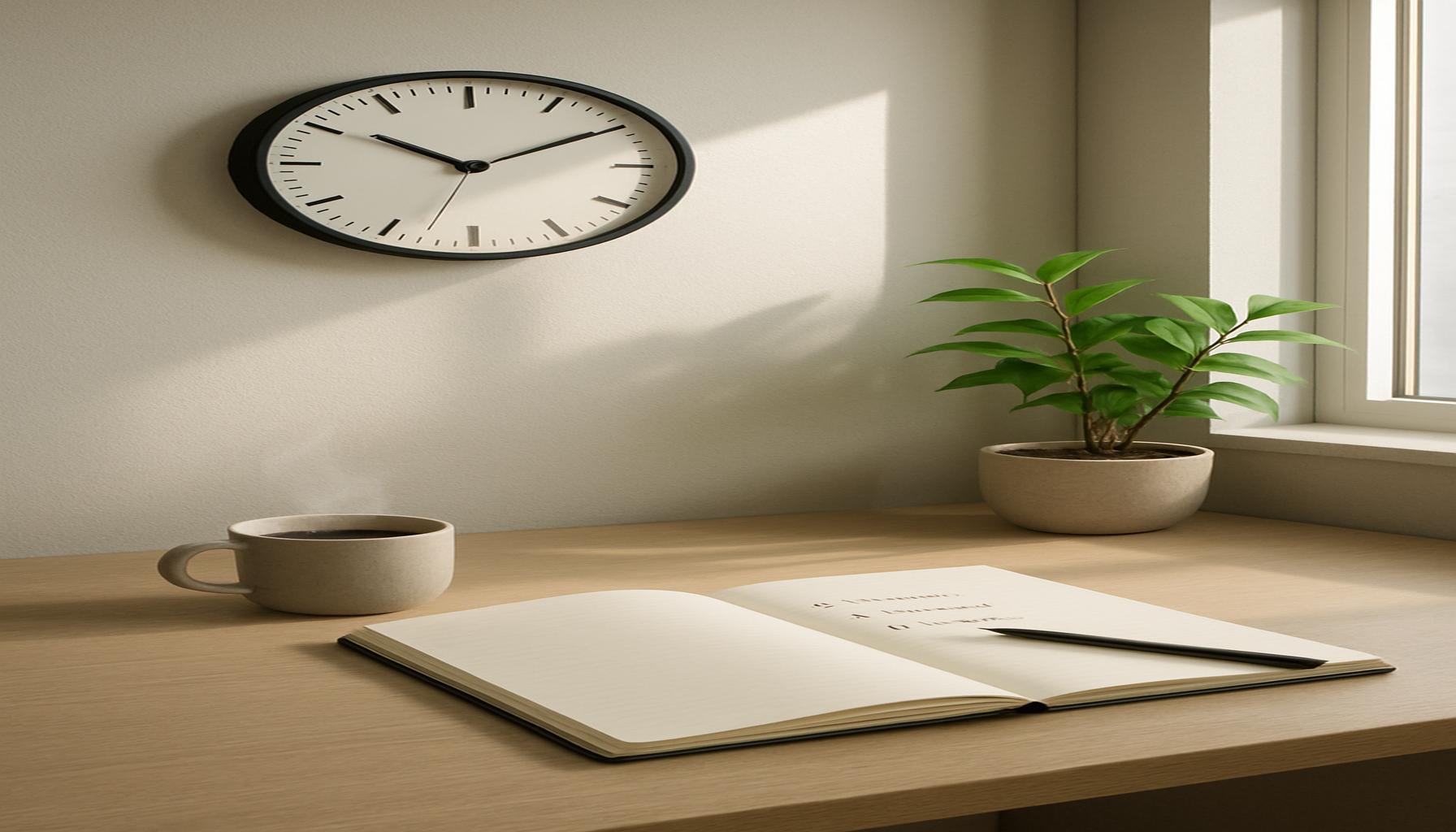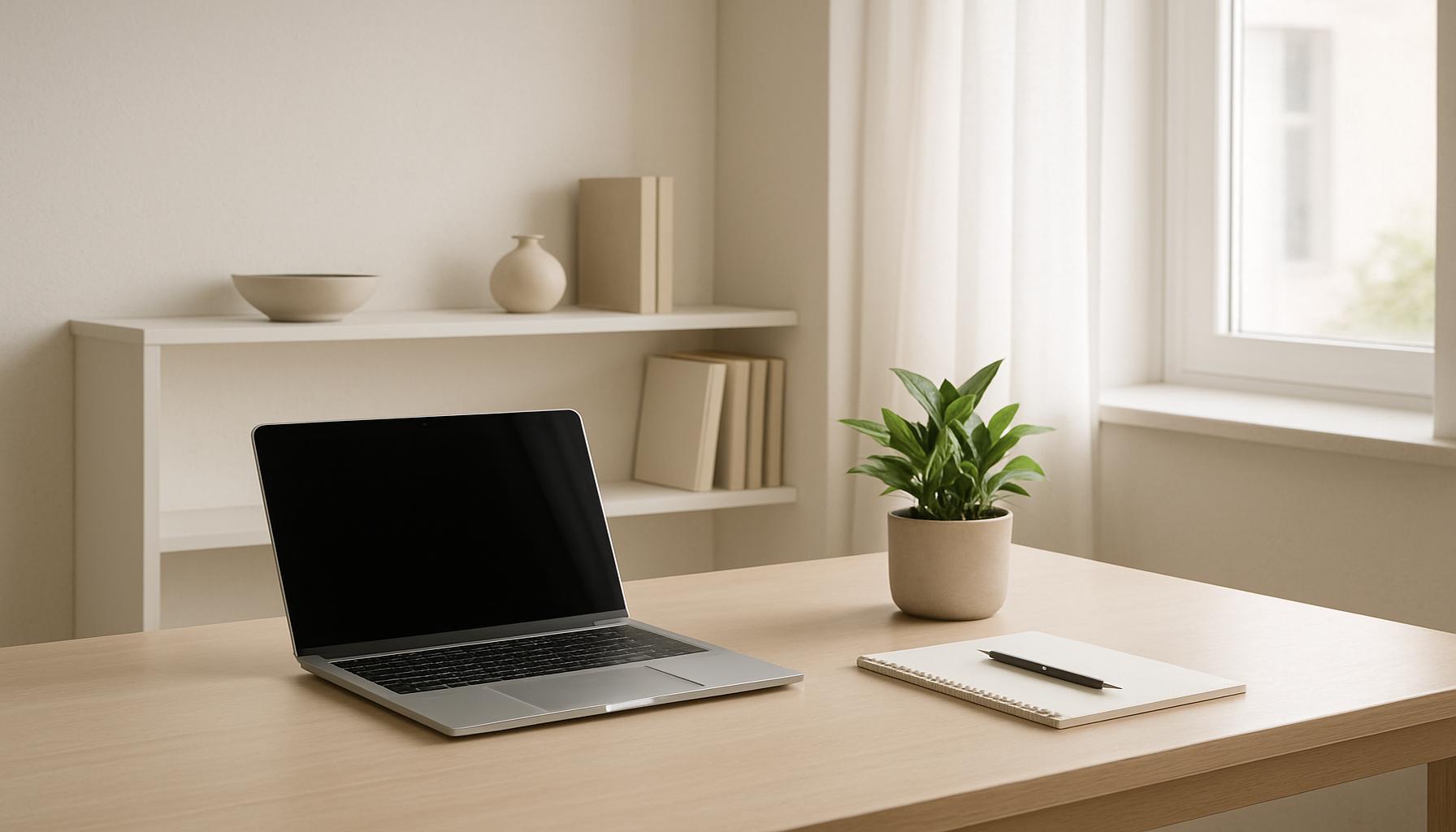Minimalism and Time Economy: Structuring Daily Activities to Maximize Results with Less Effort

Unlocking Efficiency Through Minimalism
In an age where technology bombards us with endless streams of information, adopting a minimalist approach can serve as a powerful antidote. By focusing on less, we can not only clear our physical environments but also declutter our minds, paving the way for enhanced productivity and a more fulfilling life. Achieving this transformation isn’t as daunting as it may seem—minimalism can result in profound changes in how we approach daily activities and make decisions.
The benefits of a minimalist lifestyle are manifold, with three key areas standing out:
- Reduced Stress: Studies show that fewer possessions can lead to a considerable decrease in anxiety levels. When your surroundings are less chaotic, it becomes easier to concentrate on what truly matters. For example, a tidy workspace enhances focus and promotes a calm mindset, allowing you to tackle high-priority tasks without the overwhelm often associated with clutter.
- Increased Clarity: A minimalist environment can lead to greater mental clarity. When distractions are out of the way, your brain has the bandwidth to generate creative ideas and innovative solutions. Artists and thinkers such as Steve Jobs and Mark Zuckerberg famously wore similar outfits daily, reducing wardrobe choices in order to channel energy into more substantial decisions. This idea is a testament to how simplification can fuel creativity and focus.
- Better Time Management: Minimalism encourages streamlined routines. By eliminating unnecessary activities from your schedule, you create space for your true priorities. A useful trick is the time-blocking method, wherein you dedicate specific chunks of time to predetermined tasks, thereby ensuring that you remain on course throughout your day.
So, how can individuals seamlessly blend minimalism with effective time management? It starts with some intentional practices. Here are several actionable strategies:
- Prioritizing tasks: At the beginning of each day, identify the few high-impact activities that need to be accomplished. Consider employing the Eisenhower Matrix, where tasks are categorized based on their urgency and importance to eliminate non-essential activities.
- Simplifying choices: In today’s world, decision fatigue can be overwhelming. By limiting options—be it in your daily meals or the projects you commit to—you can conserve your mental energy for more critical decisions. For instance, consider adopting a meal-prepping routine that simplifies what you eat during the week.
- Setting clear goals: Clearly define your personal and professional objectives. What does success look like for you—both in the short term and the long term? Setting SMART (Specific, Measurable, Achievable, Relevant, Time-bound) goals can help you maintain focus on what truly matters.
As we continue to explore minimalism and its intersection with effective time management, it becomes evident that these concepts empower us to live with intention and purpose. This may lead to a profound reimagining of daily routines and ultimately unlock the potential of doing less while achieving more. Take the first step toward embracing minimalism today and discover how it can transform your life.
DISCOVER MORE: Click here to simplify your life

Implementing Minimalism for Effective Time Economy
To embrace minimalism and enhance your time economy, it’s critical to understand that the essence of these concepts lies in thoughtful action rather than mere simplicity. By restructuring daily habits, we can cut through the noise of excess and focus on activities that yield the maximum impact with minimum effort. This transition requires conscious shifts in behavior that can help foster a lifestyle where productivity and presence go hand in hand.
One of the first steps in achieving this balance is decluttering not just physical spaces, but mental ones. Research indicates that mental clutter can slow cognitive processes and reduce overall productivity. Therefore, applying minimalism involves creating an environment conducive to focusing your thoughts effectively. Start by organizing your workspace; having a clean desk not only supports efficiency but also creates a sense of tranquility. Such environments can encourage deep work, a term popularized by Cal Newport, referring to professional activities performed in a state of distraction-free concentration, which generates massive value in minimal time.
In addition to creating a physical space for clear thinking, reconsidering your daily routines is a powerful way to integrate minimalism into your time management. Here are some effective strategies:
- Batching similar tasks: This technique involves grouping similar tasks and performing them in one dedicated time slot. For example, set aside a couple of hours to answer emails rather than being continually interrupted throughout the day. This focused approach can increase your efficiency exponentially.
- Eliminating time-wasters: Take note of your daily activities and identify those that do not serve your long-term goals. Activities such as excessive social media scrolling or unnecessary meetings can be trimmed from your routine, allowing you to direct your time toward more rewarding projects.
- Implementing a ‘No’ policy: Developing the ability to decline additional responsibilities or commitments that do not align with your core objectives is essential. This not only guards your time but also clarifies your priorities, ensuring that you remain focused on what truly matters to you.
Moreover, the art of saying “no” is immensely empowering. It allows individuals to avoid the overwhelm that often accompanies a bloated schedule. Setting boundaries frees up precious time, creating opportunities for the more fulfilling pursuits that lie at the core of a minimalist lifestyle. By learning to delineate between essential and non-essential commitments, you pave the way for greater productivity.
Ultimately, minimalism compels us to reassess and realign our daily actions with our values, creating a rhythm that supports not just effectiveness but also emotional well-being. As we navigate the clutter of our daily lives, it becomes increasingly vital to establish intentional pathways that lead us toward being truly productive. The next step involves recognizing how we can calibrate our activities not merely to stay busy but to achieve meaningful outcomes.
| Approach | Impact |
|---|---|
| Prioritization of Tasks | Streamlining your focus on essential tasks can prevent overwhelm and lead to significant time savings. |
| Decluttering Environment | Creating a clean and organized space fosters creativity and boosts productivity while minimizing distractions. |
| Time Blocking | Allocating specific timeframes for activities ensures better time management and maximized output without stress. |
| Mindful Consumption | Being selective about what you consume—be it digital content or physical items—can lead to a more meaningful life experience. |
This straightforward approach to minimalism and time economy is essential in today’s fast-paced world. By examining **prioritization**, **decluttering**, **time-blocking**, and **mindful consumption**, individuals can find innovative ways to enhance productivity and efficiency, transforming daily routines into structured pathways for success. Each of these strategies not only reduces stress but also encourages a minimalist mindset that emphasizes quality over quantity in both work and lifestyles. As readers delve deeper into these methods, they will discover how simple adjustments can lead to extraordinary results, paving the way for a more fulfilling life.
DISCOVER MORE: Click here to learn about simplicity in personal organization
Creating Systems for Sustained Minimalism and Time Efficiency
To fully harness the power of minimalism in time economy, it becomes essential to establish systems that foster a streamlined approach to daily activities. These systems not only promote efficiency but also become integral to maintaining focus amidst the distractions of modern life. By automating or simplifying various tasks, individuals can concentrate solely on outcome-driven efforts.
Automation serves as one of the cornerstones of effective time management. Whether through technology or simple systematic processes, the ability to automate routine tasks can free up valuable time for higher-priority goals. For instance, using productivity applications to schedule social media posts or employing automated tools for invoicing can save hours each week. Consider utilizing calendar reminders to structure important deadlines, ensuring you allocate specific time slots for significant projects without the hassle of micromanaging your schedule.
Another valuable approach revolves around the implementation of the Two-Minute Rule, a productivity technique popularized by David Allen in his book “Getting Things Done”. According to this principle, if a task takes less than two minutes to complete, do it immediately instead of deferring it. This approach reduces mental clutter and prevents undue procrastination on minor tasks, consequently allowing for more time to focus on significant projects that drive long-term success.
Additionally, the time-blocking method can be particularly effective for those looking to maximize their output with minimum effort. This technique involves allocating specific blocks of time to different tasks or categories of work throughout your day. By setting boundaries on how long you spend on each activity, you create a sense of urgency that helps combat procrastination while ensuring you stay on course. For example, designating a 30-minute block for brainstorming new marketing strategies permits deep dives into creativity without the chaos of multitasking.
Furthermore, it’s crucial to reflect and adapt your systems periodically. Assessing what strategies have been effective and which may require adjustment ensures your goals align seamlessly with the minimalist lifestyle. Tools such as weekly reviews can be beneficial, where you analyze your progress, review achievements, and recalibrate priorities as necessary. This reflection enables you to extract lessons from your experiences and remain committed to an ongoing journey of self-improvement.
Incorporating minimalism into your daily life also calls for a close examination of informational inputs. In a world inundated with constant notifications and flooding information, determining the essential sources of information is crucial. Curbing the influx from newsletters, promotional emails, and social media feeds will not only enhance focus but also prevent cognitive fatigue. Establishing boundaries around your consumption habits creates a more conducive environment for introspection and innovation.
Ultimately, structuring your daily activities through minimalism and time economy is not merely about doing less; it’s about thoughtfully directing energy toward activities that significantly augment growth and satisfaction. By implementing various systems, automating tasks, employing efficient rules like the Two-Minute Rule, and critically reflecting on those processes, individuals can reshape their habits—not just for optimal productivity but for a more fulfilling, purpose-driven life.
DIVE DEEPER: Click here to discover more
Conclusion
In the fast-paced landscape of modern life, the principles of minimalism and time economy offer a refreshing antidote to the chaos. By actively structuring daily activities with intention and clarity, individuals can unlock a new realm of possibility—one that prioritizes meaningful tasks over mere busyness. The implementation of strategies such as automation, the Two-Minute Rule, and time-blocking not only streamlines our efforts but also enhances our ability to focus on what truly matters.
Moreover, the practice of reflection and adaptation ensures that our systems remain effective and relevant. As we continually assess our progress, we foster a culture of growth and self-improvement that resonates deeply with the ethos of minimalism. Limiting informational inputs further enriches our mental space, allowing for deeper creativity and a more profound connection to our objectives.
Ultimately, the intersection of minimalism and time economy isn’t simply a method of achieving more with less; it’s a transformative approach that invites individuals to reclaim their time and redirect their energies toward pursuits that foster both personal and professional development. Embracing these concepts not only leads to improved productivity but creates a fulfilling and purposeful life. As you embark on this journey, consider the myriad benefits of restructuring your daily activities—your future self will undoubtedly thank you.


